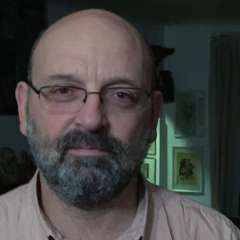Transcriptions and arrangements are not an insignificant part of the Western musical heritage, allowing composers to reuse preconceived material and interpreters to enrich their repertoire. By chance or by design, only one of the works included by Zlatomir Fung and Mishka Rushdie Momen in their Carnegie Hall debut recital – Dvořák’s brief but melodically rich Waldesruhe (Silent Woods) – was originally conceived for cello. Schumann scored his Adagio and Allegro in A flat major for the recently introduced valve horn, while Schubert wrote his Sonata in A major "Arpeggione", D.821 for a hybrid instrument that was in vogue in the 1820s before disappearing in the bottomless pit of forgotten gadgets. César Franck’s famed Violin Sonata in A major was meant to feature, as the title suggests, a violinist. (The encore introduced another arrangement, by Marshall Estrin, adding a beautiful cello line to Borodin’s Nocturne from the Petite Suite piano cycle).
At his young age, Fung seems to be one of those rare musicians with a Midas touch: he quickly envelopes every score he plays in an almost palpable golden aura. Always smiling, he approached both the gentle and dreamy introduction and the fiery second segment in Schumann’s Adagio and Allegro with the same calm determination that was a distinctive sign of the entire evening. The way Fung and Rushdie Momen never overemphasized the piece’s ebullient romanticism, drawing attention instead to those lyrical passages in the Allegro that recall the melodic and rhythmic motives first encountered in the Adagio, was remarkable indeed.
More evidence of the deep level of understanding between two interpreters that haven’t played much together was even clearer in the meatier works on the program. It is not about their entrances being (almost always) synchronous or blending timbres but about sharing a perspective on the relative importance of every interpretative detail. In rendering Schubert’s music, they seem to agree that reminiscences of his gloomy Lieder are never too far even in a relatively exuberant opus as the Arpeggione Sonata. The melancholy-imbued central movement with its frequent major-minor shifts was truly the high point of this version, despite its brevity. The Allegro Moderato, with the cello main theme detaching itself from the accompanying weave, sounded at times both energetic and pensive. The joy in the virtuosic finale was mostly tempered, with forte moments proving themselves ephemeral.
Presented in Jules Delsart’s well-known arrangement – the only one sanctioned by the composer – Franck’s Sonata in A major was rendered with great ardor and lyricism. At the same time, details were carefully considered. At the end of the serenade-like Allegretto, the merging of the two alternating themes was exquisite. The way the sad, Slavic-sounding motif appearing in the Recitativo-Fantasia was connected to the opening theme had a magical quality. In a score where the piano has a major role, Rushdie Momen’s assertive pianism successfully supplemented Fung’s inspired reading. Nevertheless, as in Schubert, the sensitive, technically solid pianist could only partially match the cellist’s phenomenal dynamic range, constantly instilled with surprising inflections.
Weill Recital Hall’s intimate space and acoustics offered the opportunity to absorb chamber music in conditions closer to those the composers had in mind when they conceived their opuses. When purists comment about the need to employ original instruments to recapture the creators’ intentions, they only tackle half the equation. Despite using (relatively) modern instruments, the clarity of the sound and the level of perceived details in Fung and Rushdie Momen’s recital easily transported one back in time to an 19th-century salon.


